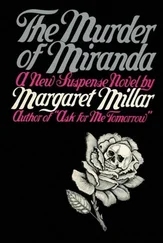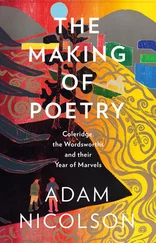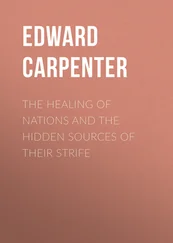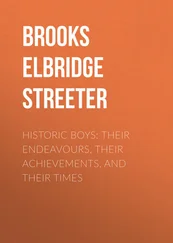Маргарет Миллар - The Birds and the Beasts Were There
Здесь есть возможность читать онлайн «Маргарет Миллар - The Birds and the Beasts Were There» весь текст электронной книги совершенно бесплатно (целиком полную версию без сокращений). В некоторых случаях можно слушать аудио, скачать через торрент в формате fb2 и присутствует краткое содержание. Город: New York, Год выпуска: 1967, Издательство: Random House, Жанр: Природа и животные, на английском языке. Описание произведения, (предисловие) а так же отзывы посетителей доступны на портале библиотеки ЛибКат.
- Название:The Birds and the Beasts Were There
- Автор:
- Издательство:Random House
- Жанр:
- Год:1967
- Город:New York
- ISBN:нет данных
- Рейтинг книги:4 / 5. Голосов: 1
-
Избранное:Добавить в избранное
- Отзывы:
-
Ваша оценка:
- 80
- 1
- 2
- 3
- 4
- 5
The Birds and the Beasts Were There: краткое содержание, описание и аннотация
Предлагаем к чтению аннотацию, описание, краткое содержание или предисловие (зависит от того, что написал сам автор книги «The Birds and the Beasts Were There»). Если вы не нашли необходимую информацию о книге — напишите в комментариях, мы постараемся отыскать её.
The Birds and the Beasts Were There — читать онлайн бесплатно полную книгу (весь текст) целиком
Ниже представлен текст книги, разбитый по страницам. Система сохранения места последней прочитанной страницы, позволяет с удобством читать онлайн бесплатно книгу «The Birds and the Beasts Were There», без необходимости каждый раз заново искать на чём Вы остановились. Поставьте закладку, и сможете в любой момент перейти на страницу, на которой закончили чтение.
Интервал:
Закладка:
The band-tailed pigeons, I had learned, used an old Monterey cypress at the head of the canyon as their favorite roost. It seems likely that when the sun set the first evening of the fire, some of the doves and pigeons were roosting in the same cypress, or in the oaks and pines nearby. At nine o’clock the santana began, and in the course of the night the entire area was overrun by flames. The oak leaves burned like paper, the cypress and pine needles like oil-soaked toothpicks.
There were no reports of scorched doves or pigeons, or of smoke-blackened jays. I would like to believe that the birds were lost only to us, that they fled the fire in safety and found food and water and shelter in someone else’s yard. Perhaps they did.
It is difficult to tell what events were the direct result of the fire and what might have happened anyway. In the case of the house wrens, for instance, many of these birds desert the inhabited areas in early fall and spend the next six months in the brush-covered hills preferred by the Bewick wrens and wrentits. Their disappearance on the day the fire started, September 22, may simply have been a coincidence. Perhaps the palm warbler which came on September 25 would have come, fire or no fire; it provided us, however, with the first record of this species in Santa Barbara.
Members of the Audubon Society were asked to be on the lookout for unusual birds, and for noticeable increases or decreases in the number of the ordinary birds. Those who expected disastrous changes were pleasantly surprised by the normal pattern of the migrations:
The white-crowned sparrows arrived for the winter on schedule, on September 24, while the fire was still raging.
The Audubon warblers appeared the next day.
On the 28th, the hooded orioles left for Mexico, the Nashville warblers passed through on their way south and the last of the yellow warblers of the season were observed. On that day, too, the Oregon junco returned.
On October 3, our pair of Lincoln sparrows came back at the same time as the first dozen golden-crowned sparrows, always a week or two later than the white-crowns.
On October 8, the yellow-breasted chat concluded his yearly late-summer stay with us. I don’t know where he went but I’m willing to wager it was a banana-growing region. He was the only wild bird at the feeding station who always showed a distinct preference for bananas.
October 24 marked the return of two myrtle warblers a month later, as usual, than their look-alike cousins, the Audubons.
On November 17, a slaty fox sparrow arrived, followed three days later by one of the rusty subspecies. This was exactly on schedule as far as the feeding station was concerned. Fox sparrows are reported to reach southern California in mid-September and have been seen in Santa Barbara as early as September the 1st, but my records show only one arrival even close to that, on September 28, in 1961; the others have all been in November.
November also brought a burrowing owl, the first of this species to visit us, and he was duly recorded as home visitor No. 106. It’s possible that his appearance was indirectly caused by the fire since this species is not normally seen in canyon areas like ours. However, these birds aren’t always predictable. According to a report in Audubon Field Notes (Volume 19, No. 1), a burrowing owl had, during the previous month, come aboard a ship about sixty miles south of San Clemente Island.
What, then, were some actual results of the fire and what birds were affected?
As might be expected the birds suffering most heavily were terrestrial species poorly equipped to escape by flight. The number of quail found on the Christmas count three months after the fire was 170, compared to 604 found the previous year, and the number of California thrashers was 19, compared to 41. Fringe areas of the fire, such as certain sections of the Botanic Garden, demonstrated an apparent increase in wrentits. These retiring little birds were not only more numerous, they acted bolder than normal and were consequently easy to observe. The overall picture turned out different, however. The 85 wrentits reported on the Christmas count showed a 50-percent decrease from the previous year. It seems more than likely that these three species, quail, thrashers and wrentits, suffered considerable losses in the fire.
Another ground dweller, the Oregon junco, showed an apparent increase because many flocks took to foraging in the burned-over areas and were easy to see in the absence of vegetative cover. Almost a thousand were reported on the Christmas count, double the previous year’s 474. The following year, when the ground vegetation was just about back to normal after a vast reseeding program, the number of juncos also returned to normal, 430; but wrentits remained at a low 84, thrashers at 24, and quail at 330.
Our most personal loss could not be attributed directly to the fire, yet I think it played a part. Johnny, our Scottish terrier, was thirteen at the time and his two wild nights as a refugee did nothing to lighten the load of his years. Up until then he’d been in good health, though his muzzle was long since grey and it had become increasingly apparent that either he was getting lower or the ground was getting higher.
His deterioration after the fire was very rapid. He began losing his hearing and his teeth, and an infection in his nose and eyes proved resistant both to all kinds of antibiotics and to cortisone. He also developed a heart condition which required a digitalis pill twice a day.
The usual technique of administering pills to animals involved a kind of force-feeding most unsuitable to a dog of Johnny’s advanced years and enormous dignity, as well as tender jaws. We therefore spent a considerable percentage of our time devising ways and means of concealing the pills in food. They were served buried in hamburger, wrapped in bacon or bologna, smothered in cottage cheese and scrambled eggs, hidden in chunks of cheddar, inserted in cunningly slit pockets in steak or wedged into frankfurters or liver sausage. After the cheese, steak, liver sausage, etcetera was consumed, we’d often find the digitalis pill on the floor. When this happened I thought of Bushman, the massive gorilla who was the star of the Lincoln Park Zoo in Chicago in the days before tranquilizers and tranquilizer guns eased the difficulties of medical attention for larger animals. Bushman died of pneumonia because he couldn’t be fooled into swallowing the drugs hidden in his food.
By December, Johnny, blind, arthritic and deaf, had become almost completely dependent. It was a strange fate for this sturdy, self-reliant little creature, this most unlapdog of dogs. He had to be lifted in and out of the red leather chair where he slept, and carried up and down stairs. He could be let out alone in the fenced yard where he knew every plant and weed and blade of grass. Elsewhere, in the field next door, on the path down to the creek, or up the road to the neighboring houses, I went with him, keeping a tactful distance behind so as not to disturb his Scottish pride.
On a foggy evening shortly before Christmas a delivery boy left the fence gate open and Johnny disappeared. We roused the people next door and there began a frantic search by flashlight for a small black dog in a large black night. Eventually he was found on the other side of the circle, sitting calm and composed in a yard once occupied by his girlfriend, also a Scottie, named Annie Laurie. She had long since left the neighborhood, and perhaps life itself; but Johnny was dreaming of happier times, bright days, fast runs, fair ladies.
One morning in mid-February he began hemorrhaging, and at noon he was put to sleep.
The Coyote fire had taken a heavy toll. But for some people who lived far from the fire’s perimeter and never gave a thought to its effect on them, the worst was yet to come.
Читать дальшеИнтервал:
Закладка:
Похожие книги на «The Birds and the Beasts Were There»
Представляем Вашему вниманию похожие книги на «The Birds and the Beasts Were There» списком для выбора. Мы отобрали схожую по названию и смыслу литературу в надежде предоставить читателям больше вариантов отыскать новые, интересные, ещё непрочитанные произведения.
Обсуждение, отзывы о книге «The Birds and the Beasts Were There» и просто собственные мнения читателей. Оставьте ваши комментарии, напишите, что Вы думаете о произведении, его смысле или главных героях. Укажите что конкретно понравилось, а что нет, и почему Вы так считаете.
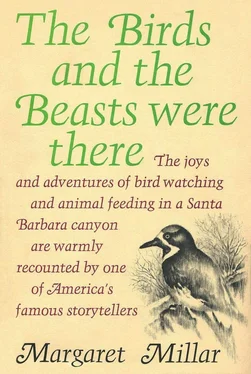
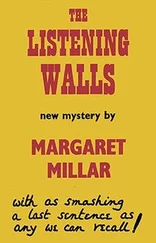
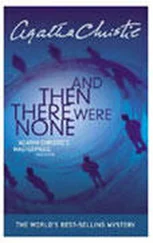
![Маргарет Миллар - Rose's Last Summer [= The Lively Corpse]](/books/384369/margaret-millar-rose-s-last-summer-the-lively-c-thumb.webp)

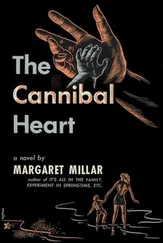
![Маргарет Миллар - The Iron Gates [= Taste of Fears]](/books/433837/margaret-millar-the-iron-gates-taste-of-fears-thumb.webp)
